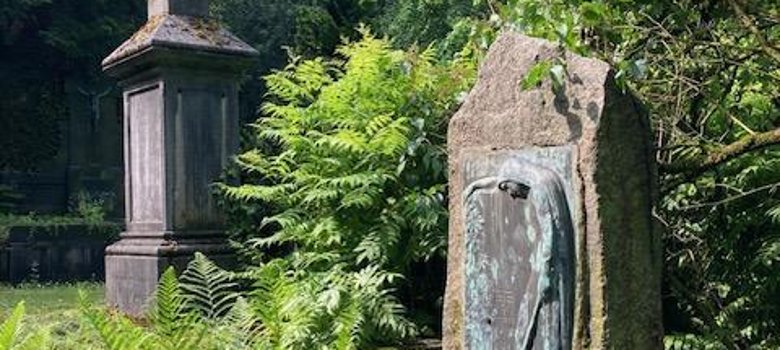What is a small monument?
In general, a small monument is a stationary, freestanding "object" of relatively small dimensions. It is intended to give food for thought, serve as a reminder or serve a specific purpose.
In the Rhineland and beyond, there are a large number of small monuments in populated and unpopulated areas. In our region, which is also part of the Meuse-Rhine European Region, there are specific small monuments that characterize and shape our cultural and urban landscape as elements that create a sense of identity. The North Rhine-Westphalian Monument Protection Act (DSchG NRW) ensures their preservation where there is evidence of their monumental value.

A small monument, can be
a fountain (e.g. the market fountain in front of Aachen Town Hall),
a memorial stone (e.g. the Tranchot obelisk on the Lousberg),
a boundary or distance stone (e.g. a Prussian milestone on Lütticher Straße),
a sculpture (e.g. the Hansemann memorial on Hansemannplatz),
a wayside shrine (e.g. the St. Antonius wayside shrine on Horbacher Straße),
a wayside cross or a wayside and processional cross (e.g. on Lindenplatz).e.g. on Lindenplatz),
a war memorial (e.g. the war memorial in Haaren), or
a grave in a cemetery.
As graves and burial sites in particular are often privately owned (right of use), the following is a recommendation on how to deal with listed graves (the possibility of adopting a grave is also mentioned):
Important information for monument owners of burial grounds
Fundamentals
Listed gravesites, which include their enclosures and plantings as well as their historical first inscriptions, must be preserved as a testimony to the past at their respective locations.
Work on gravesites must be carried out in accordance with the preservation order; the preservation of the substance and the preservation of the respective historical appearance have priority.
A case-by-case assessment is required; this also applies, for example, if a new inscription plaque is to be added to a gravesite after a new right of use has been granted by the cemetery administration. In this context, various options are discussed with the Lower Monument Authority.
Note on the legal basis
According to § 9 DSchG NRW, work on listed graves requires a permit. Permission must be obtained in writing from the Lower Monument Authority of the City of Aachen before commencing the planned measures.
Please send your informal request to: denkmalpflege@mail.aachen.de. If necessary, enclose an offer from a specialist company describing your planned measures.
Well-known small monuments
Tranchot obelisk on the Lousberg
When the earth was still measured with fixed points on the land - today satellite measurement methods are used
 City of Aachen
City of Aachen
The Tranchot obelisk on the Lousberg is a unique monument to the history of technology in Aachen: the French engineer Tranchot, commissioned by Napoleon Bonaparte, determined a main surveying point on the higher ground using astronomical observations, among other things. This trigonometric point was the starting point for the first accurate survey of the western Rhineland and was fundamentally important for the creation of precise maps that depicted reality. In 1815, von Müffling continued the survey on behalf of the Prussian government.
Originally reserved for military use, the map series created over the years still serves as a reliable source of information for countless users with different questions.
In 1807, the obelisk dedicated to Napoleon was erected as a landmark 90 meters above the city center using bluestones from the region. In 1814, it was overthrown and then slightly rebuilt. Already conceived as a monument, it is a nationally significant historical testimony that illustrates the "French period" in Aachen and contributes to the identification of its urban society. Due to its monumental value, it was added to the list of monuments in 1988. From its location in a historic park, the first public city park in Europe initiated by citizens, there is an impressive view over Aachen. The axial relationship between this point de vue and Trierer Strasse is interesting from an urban planning perspective.